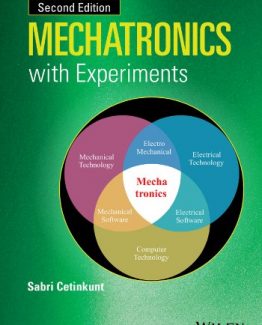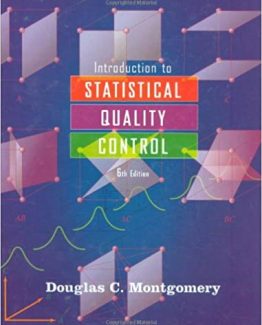The Essentials of Technical Communication 5th Edition by Elizabeth Tebeaux, ISBN-13: 978-0197539200
[PDF eBook eTextbook] – Available Instantly
- Publisher: Oxford University Press; 5th edition (November 6, 2020)
- Language: English
- 448 pages
- ISBN-10: 0197539203
- ISBN-13: 978-0197539200
The most accessible, concise, and affordable guide to effective professional communication that ensures your work gets read–not tossed!
In today’s complex workplace, no one wants to read what you write. The Essentials of Technical Communication, Fifth Edition, was developed with this principle in mind. The respected author team continues to provide students with accessible and comprehensive instructions for planning, drafting, and revising technical documents that are clear and concise. Divided into two flexible parts–Principles and Applications–the text lays a strong foundation in the rhetoric principles before examining the principle types of workplace documents with checklists for use in preparing them.
Table of Contents:
Cover Page
Title page
Copyright page
Checklists
Preface
Approach
Organization
Key Features
New to This Edition
Acknowledgments
Part One Principles
1 Characteristics of Writing at Work
Writing at Work Versus Writing at School
Requires acute awareness of security and legal liability.
Requires awareness that documents may be read by unknown readers.
Achieves job goals.
Addresses a variety of readers who have different perspectives.
Requires a variety of written documents.
The Foundations of Effective Writing at Work
The Qualities of Good Technical Writing
Exercises
2 Writing for Your Readers
Understand Your Readers—The Heart of the Planning Process
Keep in mind that business readers want answers now.
Determine your readers and their perspectives.
Determine your purpose.
Understand your role as a writer.
Plan the content.
Anticipate the context in which your writing will be received.
The Basic Parts of the Composing Process
Analyzing the writing situation—purpose, readers, and context.
Choosing/discovering information.
Arranging information.
Drafting.
Revising.
Editing.
Exercises
3 Writing Ethically
Your Professional Obligations
Codes of Conduct and Standards of Practice
Recognizing Unethical Communication
Plagiarism and theft of intellectual property.
Deliberate use of imprecise or ambiguous language.
Manipulation of numerical information.
Use of misleading illustrations.
Promotion of prejudice.
Failure to make information accessible.
Distribution of misinformation.
Writing Collaboratively
The team leader.
Requirements of team leaders.
Requirements of team members.
Managing Unethical Situations
Exercises
4 Achieving a Readable Style
The Paragraph
Examples for study.
Basic Principles of Effective Style
Determine your readers’ knowledge of the subject.
Determine whether a particular style will be expected.
Adjust the style to the readers, the purpose, and the context.
Keys to Building Effective Sentences
Watch sentence length.
Keep subjects and verbs close together.
Avoid pompous language; write to express, not to impress.
Avoid excessive use of is / are verb forms.
Use active voice for clarity.
Word Choice
Squeaky Clean Prose
Exercises
5 Designing Documents
Understanding the Basics of Document Design
Determine which decisions are yours to make.
Choose a design that fits your situation.
Plan your design from the beginning.
Make your design accessible.
Reveal your design to your readers.
Keep your design consistent.
Designing Effective Pages and Screens
Use blank space to frame and group information.
Choose a legible type design.
Space lines of text for easy reading.
Adjust line length to page or screen size.
Use a ragged right margin.
Position words and illustrations in a complementary relationship.
Helping Readers Locate Information
Use frequent headings.
Compose descriptive headings.
Use concrete language.
Use questions, verb phrases, and sentences instead of nouns alone.
Use standard headings if readers expect them.
Make the headings parallel.
Make sure the headings match any list or table of contents in the document.
Design distinctive headings.
Limit the number of heading levels.
Create a pattern for the headings and stick to it.
Match size to importance.
Make your headings accessible.
Put more space above a heading than below it.
Keep each heading with the section it covers.
Consider using numbers with your headings.
Use page numbers and headers or footers.
Number the pages.
Include headers or footers.
Testing Your Design
Exercises
6 Designing Illustrations
Creating Illustrations
Tables.
Bar and column graphs.
Circle graphs.
Line graphs.
Organization charts.
Flow charts.
Project schedule charts.
Diagrams.
Photographs.
Infographics.
Video clips.
Designing Illustrations Ethically
Testing Your Illustrations
Exercises
Part Two Applications
7 E-mails, Texts, Memos, and Letters
E-mail and Text Messages
Memos and Letters
Guidelines for Effective Correspondence
Appropriate Tone in E-mails, Texts, Memos, and Letters
Guidelines for Dealing with Tone
Writing for Social Media
Planning and Writing Correspondence
Exercises
8 Technical Reports
Kinds of Reports
Report Categories—Informal and Formal
Informal Report Headings
Subject line.
Reference.
Action required.
Distribution list.
Parts of an Informal Technical Report
Introduction.
Subject or report topic.
Report purpose.
Background or rationale.
Report development.
Summary.
Discussion.
Conclusion.
Recommendations.
Attachments.
Developing Reports
Elements of Formal Reports
Prefatory elements.
Letter/memo of transmittal.
Title page.
Submission page.
Table of contents.
List of illustrations.
Glossary and list of symbols.
Abstracts and summaries.
Informative abstract.
Descriptive abstract.
Executive summaries.
Discussion, or body of the report.
Parts of the discussion.
Collecting and grouping information.
Strategy for presenting the discussion.
Reports with standard arrangement patterns.
Topical arrangement.
Chronological arrangement.
Persuasive arrangement and development.
Letter Reports
Example Report for Study
Exercises
9 Proposals and Progress Reports
Proposals
The context of proposal development.
Effective argument in proposal development.
Standard sections of proposals.
Summary.
Project description (technical proposal).
Introduction.
Rationale and significance.
Plan of the work.
Scope.
Methods.
Task breakdown.
Problem analysis.
Facilities and equipment.
Personnel (management proposal).
Budget (cost proposal).
Conclusion.
Appendices.
Progress Reports
Structure of progress reports.
Structure by work performed.
Structure by chronological order.
Structure by main project goals.
Online submission of progress reports.
Style and Tone of Proposals and Progress Reports
Exercises
10 Instructions, Procedures, and Policies
Instructions versus Procedures
Critical Role of Instructions and Procedures in the Workplace
Planning Instructions and Procedures
Structure and Organization
Introduction.
Theory governing the procedure or instruction.
Warnings, cautions, hazards, and notes regarding safety or quality.
Conditions under which the task should be performed.
Name of each step.
Online Instructions
Video Instructions
Testing Your Instructions
Exercises
11 Oral Reports
Understanding the Speaking–Writing Relationship
Analyzing the Audience
Determining the Goal of Your Presentation
Choosing and Shaping Content
Analyzing the Context
Choosing the Organization
Introduction.
Body.
Conclusion.
Choosing an Appropriate Speaking Style
Designing the Slides to Enhance Your Purpose and Your Meaning
Questions for Planning Your Presentation
Audience.
Purpose.
Context.
Content.
Illustrations.
Style.
Speaking to International Audiences
Designing Each Segment
Choose an interesting title.
Develop your presentation around three main divisions.
Focus the introduction.
Organize the body.
Fortify the conclusion.
Choosing an Effective Delivery Style
Techniques to Enhance Audience Comprehension
Designing and Presenting the Poster Presentation
Designing and Presenting the Scripted Presentation
Organizing the scripted presentation.
Writing the script.
Practicing the presentation.
Exercises
12 Résumés and Job Applications
The Correspondence of the Job Search
Prepare your application for AI screening.
Review your social media profile.
Letter of application.
The beginning.
The body.
The ending.
The complete letter.
The résumé.
Chronological résumés.
Functional résumés.
Follow-up letters.
No answer.
After an interview.
After being refused a job.
Accepting or refusing a job.
Your Social Media Profile
Interviewing
The interview.
Negotiation.
Before and after the interview.
Exercises
Appendix A Brief Guide to Grammar, Punctuation, and Usage
ab Abbreviations
apos Apostrophes
acro Acronyms
brackets Brackets
cap Capitalization
colon Colon
c Comma
dm Dangling Modifier
dash Dash
ell Ellipsis
exc Exclamation Point
frag Fragment
hyphen Hyphen
ital Italicization
mm Misplaced Modifier
np/ag Noun–Pronoun Agreement
num Numbers
paral Parallelism
paren Parentheses
pron Pronoun
quot Quotation Marks
run-on Run-On Sentence
semi Semicolon
sv/ag Subject–Verb Agreement
ww Wrong Word
Appendix B Using Sources of Information
The APA System
Book:
Collection:
Essay or article in a book:
Article in a professional journal:
Article in a magazine:
Article in a newspaper, anonymous:
Government publication:
Article in an online news source:
Page of a website:
Online multimedia source:
Posting to e-mail distribution list:
Posting to a blog or bulletin board:
Tweet:
The Chicago System
Notes:
Book:
Collection:
Essay or article in a book:
Article in a professional journal:
Article in a magazine:
Article in a newspaper, anonymous:
Government publication:
Article in an online news source:
Page of a website:
Online multimedia source:
Posting to e-mail distribution list:
Posting to a blog or bulletin board:
Tweet:
The IEEE System
Book:
Collection:
Essay or article in a book:
Article in a professional journal:
Article in a monthly publication:
Article in a daily newspaper:
Government publication:
Article in an online news source:
Page of a website:
Online multimedia source:
Posting to an e-mail distribution list:
Posting to a blog or bulletin board:
Tweet:
Appendix C Report for Study and Analysis
Index
List of Illustrations
List of Tables
Elizabeth Tebeaux is Professor Emerita of English at Texas A&M University and has taught technical and practices technical writing for close to forty years.
Sam Dragga is Professor Emeritus of English at Texas Tech University. From 2016 to 2020, he served as editor of the quarterly research journal of the Society for Technical Communication.
What makes us different?
• Instant Download
• Always Competitive Pricing
• 100% Privacy
• FREE Sample Available
• 24-7 LIVE Customer Support






Reviews
There are no reviews yet.